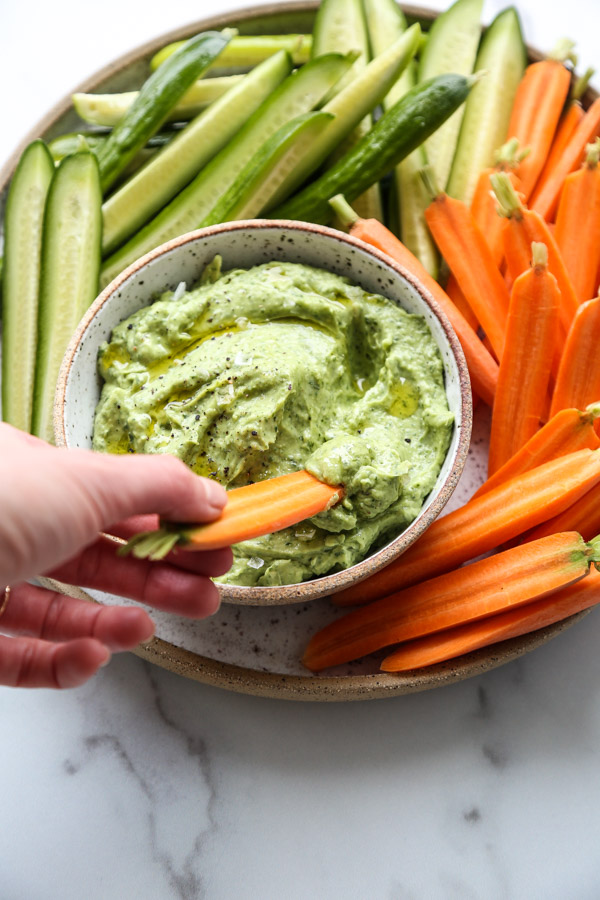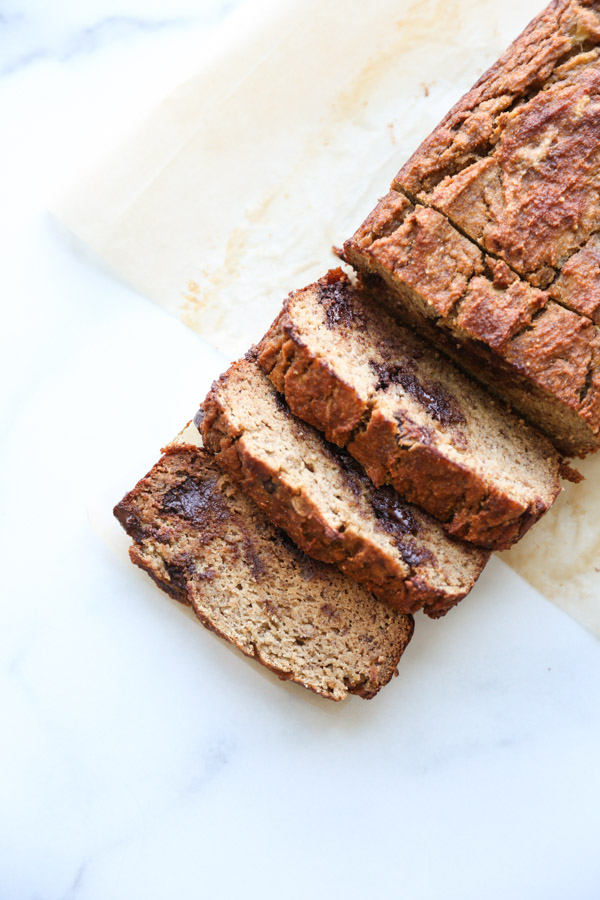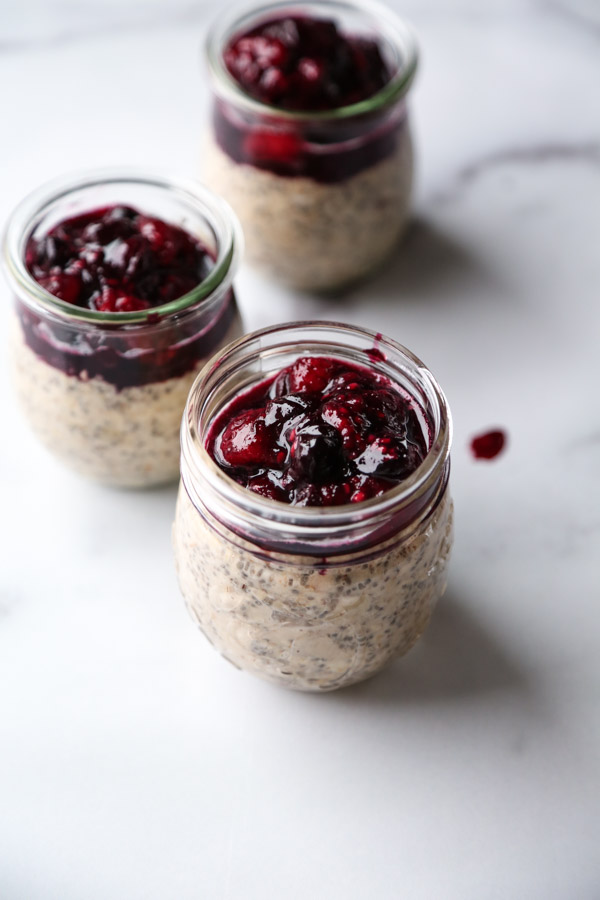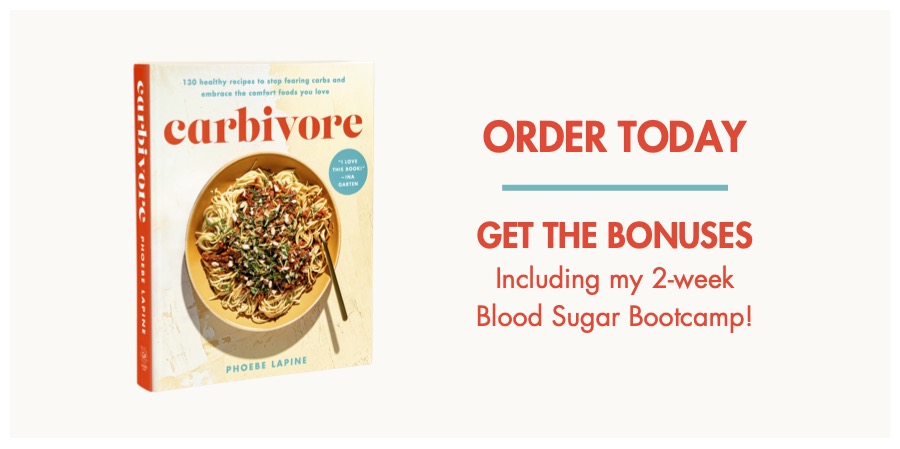If you’re confused about what you should be eating as a snack with IBS, dietician Kate Scarlata has put together these healthy low FODMAP snack ideas and recipes to add to your rotation, along with tips on how to support your gut between meals.

Snacking tends to be a big source of confusion for people with gut issues.
I get asked all the time how meal spacing works without snacking, especially for those who tend to feel constant hunger throughout the day. I’ve given my two cents to SIBO Amigos here, but I thought it would be worthwhile to have someone with actual clinical experience give a more thoughtful answer to how to snack healthfully with IBS.
Today, SIBO Made Simple podcast alum and dietician Kate Scarlata is sharing all her tips for mindful snacking and some recipe ideas for low FODMAP snacks, since after all, she is the queen of the Low FODMAP Diet.
Kate is Epicured‘s VP of Nutrition and Translational Science and has been writing about the low FODMAP dietary approach for IBS and creating tons of resources for GI patients long before people like myself were aware of it. She is also the author of several books, her latest of which is called The Low FODMAP Diet Step by Step.
For those looking for a complete low FODMAP meal plan, there are still a few days left to sign up for the fall session of my online program 4 Weeks to Wellness. We begin September 14th! If you’re looking for some support trying out a low FODMAP elimination diet, finding your trigger foods, or slowly on-boarding to a healthier lifestyle, I highly recommend joining me!
With health and hedonism,
Phoebe
Snacking can be a great way to meet your nutrient needs throughout the day.
The more active you are, the more calories and nutrition you will need for fuel. The human body is pretty well equipped to guide and alert you with hunger pangs when you need a snack. The key is to listen to your body’s cues. If you experience being “hangry” on a regular basis, that is a big hint that you are not listening to your body’s messages.
When you eat mindfully, the experience of eating will be more joyful and in-tune to what you need for total health. If you eat mindlessly (such as eating while working on your computer), you may find you miss the enjoyment of eating as you are not paying attention to the flavor and taste sensations associated with eating delicious foods. If you opt to eat a snack because it’s “healthy” vs. what your body is craving, you will likely feel unsatisfied. When unfulfilled with your snack food choice, it is not uncommon to overeat.
For those living with digestive conditions, your snack choice and style of snacking matters. In fact, constant grazing might not be your best approach to snacking if you have a sensitive gut associated with small intestinal bacterial overgrowth (SIBO), a condition where too many bacteria reside in your small intestine.
SIBO symptoms mimic those of irritable bowel syndrome (IBS) and include bloating, gas, abdominal pain–no fun! A low FODMAP diet is a science based 3-phase approach to managing digestive symptoms associated with IBS. In clinical practice, those with SIBO also appear to benefit from reducing fermentable carbohydrates such as FODMAPs to help manage symptoms. Let’s dive into the deets about healthy snacking including great options on the low FODMAP diet.
— Kate Scarlata, MPH, RDN
HOW TO APPROACH SNACKING IF YOU HAVE IBS
Balance Matters
Ideally, select snacks that are rich in nutrition and are well-balanced. I recommend selecting snacks that contain a dose of carbs with fiber (e.g. whole grains such as oats + fresh fruits), protein (nut butter, eggs, lean meats, yogurt) and a smattering of healthy fats (e.g. nuts, seeds, olive oil), when possible. A balanced snack helps you feel mentally and physically balanced, provides a variety of nutrients, and keeps you comfortably full.
Fiber is key for feeling full and is an essential nutrient for gut health. Certain fibers act like prebiotics, “food for health promoting gut microbes”. Most fiber rich foods contain a mix of different fibers, from insoluble fiber found in the skin of produce which helps us poop to soluble fiber found in the flesh of produce which feeds our gut microbes.
As a general tip, try to select snacks with about 3-5 grams fiber or more per serving. In addition to keeping you feeling full, protein in your snacks is essential for the health of your skeleton, muscles and maintenance of your physical strength. A good range for snacktime protein is about 5-8 grams or more. A registered dietitian can help you personalize these recommendations if you have other health issues that may require additional diet modifications. Sometimes, your snack choices will not fit in perfectly with these fiber and protein recommendations. Hint: that is okay! These ranges are just a general guide.

Got a Craving? Listen up.
Whatcha craving? Tune in to your body. Are you looking for something savory? Sweet? Creamy or crunchy? A few check in questions can help guide your snack choice for your ultimate satisfaction. I am a firm believer in listening to your body when it comes to when and what to eat. Feeling hungry? Don’t dismiss these important signals from your body. Feel like eating something savory and crunchy– then select a snack that fits that profile.
Is snacking good for gut health?
It depends. We are all unique! Some people with gastrointestinal conditions can not tolerate eating a typical size meal in one sitting. In this case, snacking is essential to ensure adequate nutrient intake is provided to fuel the body. Did you know that inadequate nutrition can lead to further decline in gut motility? It’s true.
Reduced gut motility can contribute to even more digestive problems such as constipation and pelvic floor dysfunction. For individuals with small intestinal bacterial overgrowth (SIBO), less snacking and eating larger meals may be preferred. The rationale for less snacking with SIBO, is related to the function of the phase 3-migrating motor complex (MMC), also known as the “housekeeper wave” in the small intestine.
People with SIBO tend to have less frequent “housekeeper waves” which may contribute to the relapsing nature of SIBO. The phase 3 MMC waves only occur in the fasting state. Normally, these cleansing waves occur every 90-120 minutes but less frequently in IBS and SIBO. Constant grazing will prohibit the phase 3 MMC from cleansing the small intestine. In order to be ‘fasting’ you must refrain from eating or drinking anything with calories between meals. Water, black tea and black coffee are calorie free so can be consumed in between meals. The less cleansing waves, the more bacteria and food remain in the small intestine- allowing for the potential for more bacteria to flourish in the small intestine.
Ideally, allow a good 3-4 hours between eating times to allow for a cleansing wave. This time frame will still allow for snacking–just not snacking around the clock! It’s important to discuss with your GI dietitian or gastroenterologist what type of snacking pattern may be best for you. I will say, my motto tends to always be… if you are hungry, listen to your body’s cues and eat.
10 DELICIOUS LOW FODMAP SNACK IDEAS
Here are some recipes and store bought quick fixes to ensure you’ve got healthy snack options always at your fingertips:
- Low FODMAP popcorn – This homemade recipe is lightly buttered with ghee and flavored with sea salt.
- Cheese plate: Laiki rice crackers (4 grams protein, 2 grams fiber per serving), 1 ounce cheddar cheese (7 grams protein, 0 grams fiber) and ¼ cup raspberries (0 grams protein, 2 gram fiber)
- Fody foods Peanut Butter Chocolate Quinoa bars (6 grams protein, 3 grams fiber)
- Greek yogurt parfait: Lactose free Greek yogurt (¾ cup=16 grams protein, 0 grams fiber), ¼ cup blueberries (0 grams protein, 1 gram fiber), 1 tablespoon chia seeds (2 grams protein, 4 grams fiber)
- Fody foods Almond Coconut bars (6 grams protein, 3 grams fiber)
- Epicured Vanilla Coconut Chia Seed Pudding (3 grams protein,6 grams fiber) top with 10 almonds for a little protein + fiber boost (3 g protein, 2 grams fiber) – Use code SIBOMADESIMPLE for 20% off at checkout
- Banana + nut butter: 1 firm banana (1 gram protein, 3 grams fiber) with 2 tablespoons of peanut butter (7 grams protein, 2 grams fiber)
- Epicured Oatmeal Raisin Breakfast bar: (10 gram protein, 7 grams fiber) – Use code SIBOMADESIMPLE for 20% off at checkout
- Hard cooked egg and fruit: 1 large hard cooked egg (6 grams protein, 0 grams fiber) and 1 medium orange (1 gram protein, 3 grams fiber)
- Low FODMAP overnight oats: mix 1/4 cup oats (2.5 grams protein, 2 grams fiber) made with 1/2 cup lactose free milk (4 grams protein, 0 grams fiber), dash of vanilla extract and a little drizzle of maple syrup, place in the refrigerator overnight, covered. Add extra fiber boost and top with favorite low FODMAP fruit.
- Quick Chickpea Nachos: 15 tortilla chips, plain/salted ( 2 grams protein,1 gram fiber) topped with a ¼ cup canned chickpeas, drained and rinsed, (4 grams protein, 2.5 g fiber), ¼ cup shredded cheddar cheese (6 grams protein, 0 grams fiber)- (melt in microwave or oven), top with flavorful FODY foods low fodmap salsa (0 grams protein, 0 grams fiber).

Kate Scarlata, RDN, LDN is a Boston-based dietitian with 30 years of experience. Kate’s expertise is in gastrointestinal disorders and food intolerance, with a particular focus on the application of the low FODMAP diet for functional gut disorders. She was awarded the Outstanding Massachusetts Dietitian Award and recognized as Boston’s Best Dietitian by Boston Magazine. Kate is the author of numerous books and articles on digestive health topics including the New York Times Best Seller, The 21 Day Tummy Diet and her latest book, The Low FODMAP Diet Step by Step. Kate completed her postgraduate training at Brigham and Women’s Hospital, a Harvard Medical School teaching affiliate. She is currently enrolled in a Master’s of Public Health program at the University of Massachusetts. Kate has been an invited speaker to various scientific meetings nationally as well as internationally.

Ok. Gracias